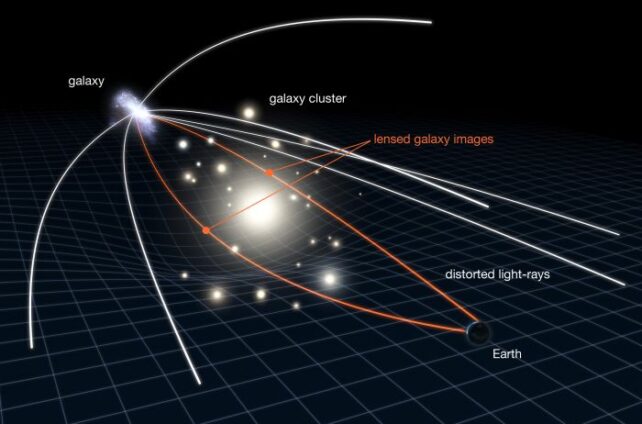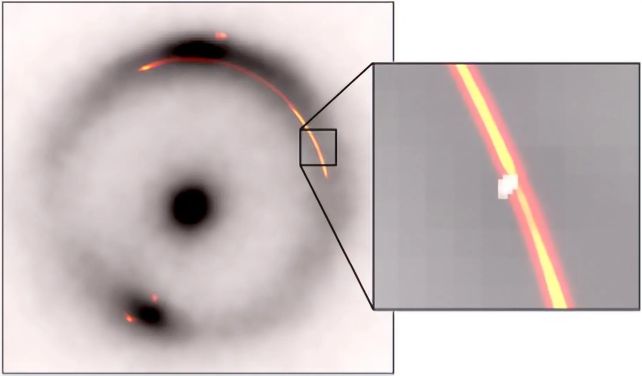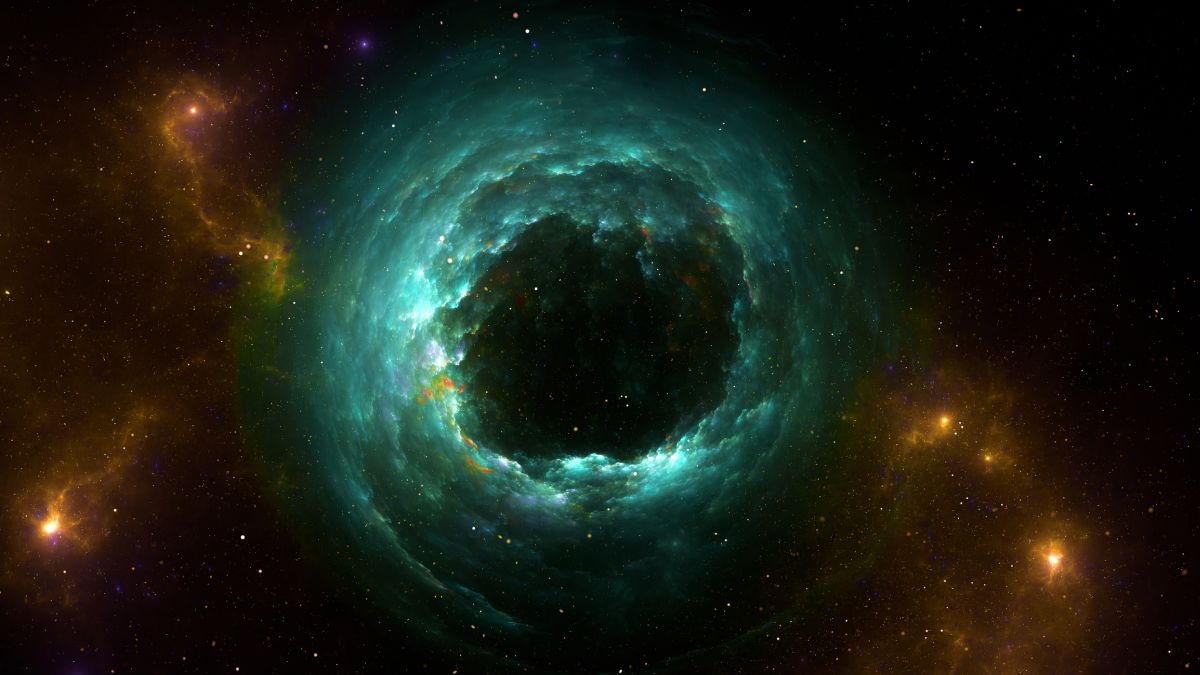In an astonishing feat of gravitational sleuthing, astronomers have found a mysterious, dense blob of invisible matter embedded in a galaxy whose light took 7.3 billion years to reach us.
Exactly what this blob might be is currently an open question, but it’s absolutely tiny for the distance at which it was detected – just around a million times the mass of the Sun. That’s the smallest object to be found based on gravity at large cosmic distances, by a factor of about 100.
“This is the lowest-mass object known to us, by two orders of magnitude, to be detected at a cosmological distance by its gravitational effect,” explains a team led by astrophysicist Devon Powell at the Max Planck Institute for Astrophysics in Germany.
“This work demonstrates the observational feasibility of using gravitational imaging to probe the million-solar-mass regime far beyond our local Universe.”
Related: Mysterious Dark Matter Mapped Across Space Like Never Before
Based on our observations of the Universe, there’s something out there that emits no light and only interacts with the rest of the Universe through gravity.
We call this something dark matter, and there are several candidate explanations for what it might be. The consistency of the matter – whether it’s smooth or clumpy – can help scientists narrow it down. However, because dark matter emits no light, mapping its distribution is challenging.
This brings us to gravity. Everything in the Universe with mass causes spacetime to bend around it – the bigger the mass, the bigger the spacetime curvature. Imagine putting, say, a bowling ball on a trampoline. If you roll a marble across the stretched trampoline mat, it will follow the curved path around the bowling ball.

Now imagine the bowling ball is a galaxy and the marble is a photon. A collection of photons from a distant galaxy traveling through the spacetime warped by the gravity of a closer galaxy (the bowling ball) will reach us stretched, distorted, and magnified. This is what we call a gravitational lens.
These lenses are a brilliant tool for studying the distant Universe, since they magnify deep space in a way that technology cannot. But astronomers can also use that stretched and distorted distant light to map the distribution of matter in the foreground lens.
This is what Powell and his colleagues set out to do, using an extensive network of telescopes, including the Green Bank Telescope, the Very Long Baseline Array, and the European Very Long Baseline Interferometric Network, to home in on a well-known gravitational lens system called JVAS B1938+666.
This system consists of a foreground galaxy at a light-travel time of about 7.3 billion years, and a more distant galaxy at roughly 10.5 billion years’ light-travel time whose light became stretched and quadrupled by the foreground galaxy.

One of the images of the lensed galaxy is a bright, smeared arc of light; in that smeared arc, the researchers found a pinched sort of dimple. This pinch, the researchers ascertained, could not have been created by the lensing galaxy alone. Instead, the culprit has to be a clump of mass, a determination made with a whopping confidence level of 26 sigma.
“From the first high-resolution image, we immediately observed a narrowing in the gravitational arc, which is the tell-tale sign that we were onto something,” says astronomer John McKean of the University of Groningen in the Netherlands.
“Only another small clump of mass between us and the distant radio galaxy could cause this.”
The mass emits no light – not in optical, radio, or infrared wavelengths. It’s either completely dark or far too dim to see. This means that there are multiple things it could be. The leading candidates are a clump of dark matter or a dwarf galaxy that emits too little light for us to detect.
Either option is plausible at this time, and further research efforts are needed to determine the identity of the culprit.
“Given the sensitivity of our data, we were expecting to find at least one dark object, so our discovery is consistent with the so-called ‘cold dark matter theory’ on which much of our understanding of how galaxies form is based,” Powell says.
“Having found one, the question now is whether we can find more and whether their number will still agree with the models.”
The findings have been detailed in companion papers published in Nature Astronomy and the Monthly Notices of the Royal Astronomical Society.
First Appeared on
Source link












